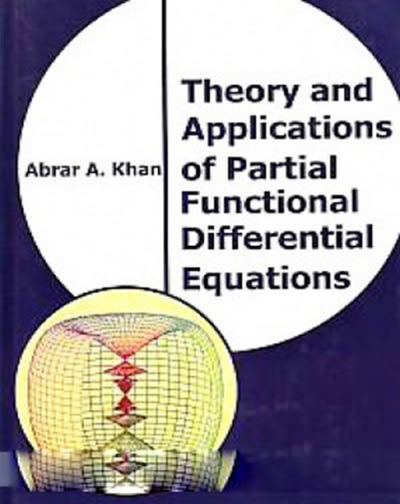Question
CHAPTER 10 21. In those cases where you can't identify a meaningful null hypothesis , a) use an arbitrary number. b) convert to zero. c)
CHAPTER 10
21. In those cases where you can't identify a meaningful null hypothesis,
a) use an arbitrary number.
b) convert to zero.
c) move on to another situation where a meaningful null hypothesis can be identified.
d) use an entirely different technique known as estimation.
22.The .05 levelof significance indicates adegree of rarity of one time in
a) five or less.
b) ten or less.
c) twenty or less.
d) one hundred or less.
23. Given criticalz values of 1.96 and an observedz value of -2.40, the appropriate decision is to
a) retain the null hypothesis.
b) reject the null hypothesis.
c) neither retain nor reject, but increase the size of the sample.
d) neither retain nor reject, but conduct another investigation.
24. Onevery prevalent decision rule specifies that the null hypothesis should be rejected if the observedz
a) equals or is more positive than 1.96.
b) equals or is more negative than -1.96.
c) equals or is more positive than 1.96 or equals or is more negative than -1.96.
d) falls between -1.96 and 1.96.
25. Reject the null hypothesis if the observedz
a) deviates too far into the tails of the sampling distribution.
b) appears to originate from the middle of the sampling distribution.
c) approaches a value of zero.
d) differs from zero.
26. To express a sample mean as az ratio,
a) subtract the hypothesized population mean.
b) subtract the hypothesized population mean and divide by the standard deviation.
c) subtract the hypothesized population mean and divide by the variance.
d) subtract the hypothesized population mean and divide by the standard error.
27. A decision rule specifies precisely when the null hypothesis should be rejected because the observedz qualifies as
a) a rare outcome.
b) a common outcome.
c) an erroneous outcome.
d) an impossible outcome.
28. A sample mean qualifies as arare outcome if it appears to emerge from the
a) dense concentration of possible sample means in the middle of the sampling distribution.
b) dense concentration of possible sample means in either tail of the sampling distribution.
c) sparse concentration of possible sample means in the middle of the sampling distribution.
d) sparse concentration of possible sample means in either tail of the sampling distribution.
29. A decision to reject the null hypothesis implies that
a) there is a lack of support for the alternative hypothesis.
b) there is support for the alternative hypothesis.
c) the sample is probably not representative.
d) the sample size is probably inadequate.
30. The null hypothesis
a) is tested indirectly.
b) makes a claim about a range of values.
c) usually asserts that nothing special is happening with respect to some population
characteristic.
d) usually is identified with the research hypothesis.
CHAPTER 11
31. An investigator is concerned only about detecting the possibility that the mean IQ for a population of high school students is smaller than 100. Therefore, thealternative hypothesis should take the form
a) = 100
b) 100
c) > 100
d) < 100
32. If the null hypothesis is false, and the randomly selectedz doesn't deviate beyond the criticalz, the null hypothesis will be
a) correctly retained.
b) correctly rejected.
c) incorrectly retained.
d) incorrectly rejected
33. If a type I error has particularly serious consequences, we can
a) increase the sample size.
b) increase the level of significance (from, for instance, .01 to .05).
c) decrease the sample size.
d) decrease the level of significance (for instance, from .05 to .01).
34. Traditional hypothesis tests tend to produce correct decisions if the null hypothesis is
a) true.
b) false.
c) either true or false.
d) either true or seriously false.
35. It doesn't make sense to test a null hypothesis that the population mean equals the observed value of the sample mean because
a) the null hypothesis always would be rejected.
b) it would be impossible for the population mean to equal the observed value of the sample mean.
c) the population mean never equals a single value.
d) thez ratio always would equal zero.
36. Type II errors are sometimes referred to as
a) false alarms.
b) wild goose chases.
c) misses.
d) all of the above
37. If the null hypothesis is false, the true sampling distribution
a) coincides with the hypothesized sampling distribution.
b) dictates the decision rule for the hypothesis test.
c) is centered about the hypothesized population mean.
d) supplies the one randomly selected sample mean (orz).
38. The smallest overlap between true and hypothesized sampling distributions would occur when the effect is
a) very small.
b) moderately small.
c) moderately large.
d) very large.
39. An investigator should be prepared to justify a one-tailed test on the basis of
a) the observed difference.
b) a strong hunch.
c) the null hypothesis.
d) logical considerations
40. Before generalizing beyond the existing data, we must always measure the effect of
a) variability.
b) the independent variable.
c) the investigator.
d) the generalization.
Step by Step Solution
There are 3 Steps involved in it
Step: 1

Get Instant Access to Expert-Tailored Solutions
See step-by-step solutions with expert insights and AI powered tools for academic success
Step: 2

Step: 3

Ace Your Homework with AI
Get the answers you need in no time with our AI-driven, step-by-step assistance
Get Started


